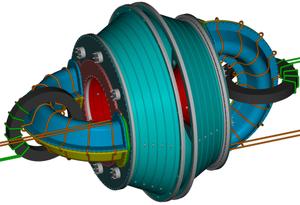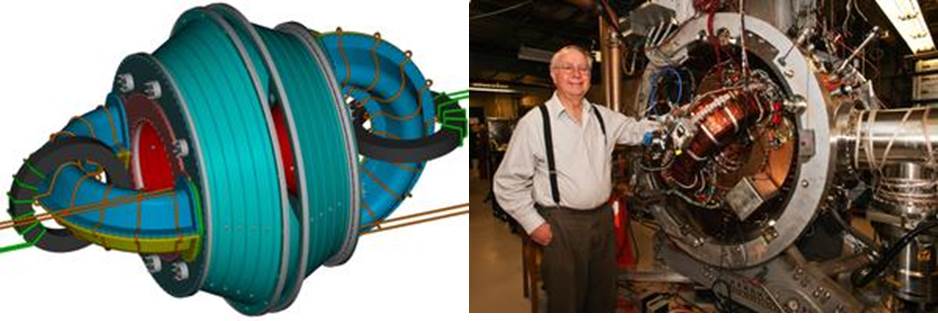September 9, 2014 – ITER is the multibillion dollar, multinational fusion reactor project being built in France. It is over budget and yet to be finished. Others, therefore, are seeking a simpler, less expensive hot fusion solution.
Fusion power requires lots of heat to create an ionized plasma. To contain the plasma you need a strong magnetic field. Since 2006 an international group has been trying to build the ITER Project, a reactor with these features. It is, however, based on current timetables, not expected to be ready until 2027. And it is expected to cost many billions of dollars more before finally operable. The figure now is approaching $50 billion U.S.
As ITER sucks more research and engineering dollars from partner governments and university budgets, some academics and energy businesses are seeking cheaper alternatives to commercial fusion reaction. But it is fundamentally hard to create and contain the Sun on Earth. Why I say this is because that’s what a fusion reactor is all about. It is the recreation of the power that drives the Sun.
In fusion reactors we heat up hydrogen or other element isotopes (deuterium, boron or helium-3 for example), stripping them of electrons and creating a plasma which we then compress using powerful magnets. The nuclei of the hydrogen then fuse and in the process release excess amounts of energy.
But what the Sun does naturally, because solar fusion can be contained by the star’s immense gravitational field, we, here on Earth, must mimic by using external containment provided by powerful magnets. Is ITER and its design the only way?
Thomas Jarboe and a group of researchers at University of Washington in Seattle don’t think so. They are attempting to build a much smaller fusion reactor that costs 1/10th the price. Jarboe is pictured here with a prototype of his reactor. The schematic drawing to the left provides a good illustration of the device he and his team are building.
Jarboe, a professor of nuclear engineering and Director of the Plasma Science and Innovation Center at University of Washington, is collaborating with Princeton’s Plasma Physics Laboratory on this experimental fusion reactor which they call a Spheromak. In their research they have discovered they can create a stable contained plasma using 1% of the energy required by a device like ITER.
TheSpheromak resembles two coffee mug handles surrounding a wheel, a far far different appearance than ITER which uses a tokamak design (see below).
Two decades of research have gone into Spheromak’s design which Jarboe believes will be far more efficient for containing plasma. That’s because the two mug-handle-shaped coils generating alternating currents on either side of the central core create what is called an imposed dynamo current drive. This creates a sustained closed magnetic field within which the plasma is contained.
Right now the reactor is a small laboratory-sized device and its size presents a problem. It is far too small to fully contain all of the plasma within it and some escapes as gas. That’s why the researchers want to build a larger version where they believe the size will solve the plasma leak problem. Total cost – approximately $2.7 billion U.S.
The United States Department of Energy is putting money into the project which is more than can be said for ITER this year. The U.S. Congress voted not to make its annual contribution to the multinational project.




















[…] of Washington: Researchers at this university are striving to create a plasma nuclear reactor with a design that to significantly reduce the cost […]